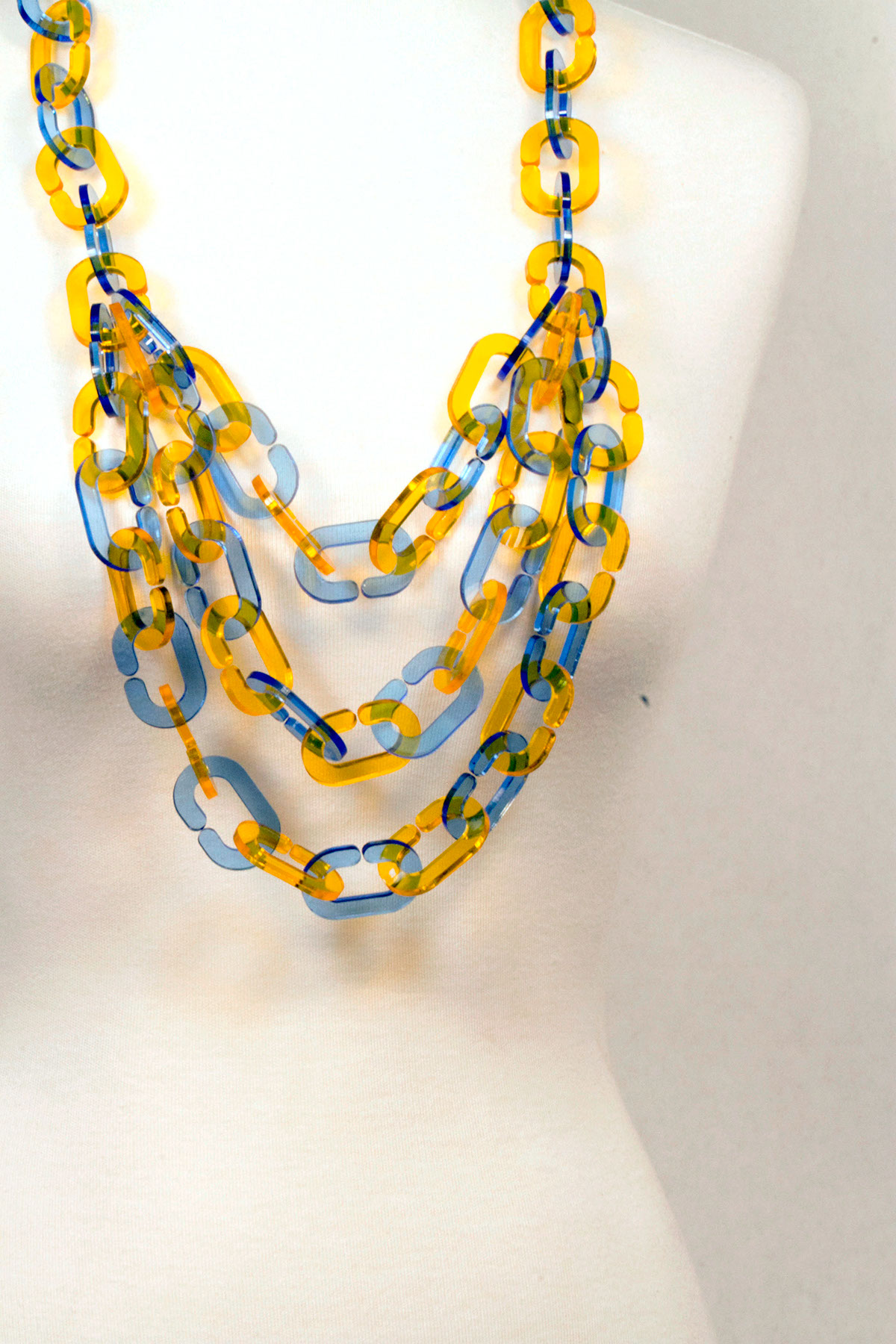Links Buildable Jewelry


When asked to make a studio project that articulated my conceptual approach to jewelry and was reflective of my self- definition, I reviewed the project that compelled me to apply to a Jewelry M.F.A. program. It was called Stems & Florets and was a set of modular felt pieces and wooden buttons that allowed the consumer/maker to build their own object. This project reflected my interest in participatory design and prosumerism before I even knew what those topics were. For this studio project, I decided to follow these ideas and use my time to continue research.
In recent years, there has been a shift in design in which “people are no longer satisfied with simply being ‘consumers.’ They want to be ‘creators’ as well” (Sanders 4). They want to take an ac- tive role in building their lives, and this trend is embodied in the DIY movement, Pinterest, prosumerism and ever more customizable products (Ramljak). I am interested in the ability of an object to encourage its consumer to be active creatively, and that activity’s ability to establish and grow a consumer’s investment and attachment to that object. Professor Cramer of RMIT University has suggested that “offering the user the opportunity to take part in an object’s design, allows them to invest something of themselves in it,” a characteristic he argued can extend the life of the product (437). This trend in design and American culture is a move towards a qualitative rather than quantitative way of living in which designers will act as catalysts for creativity (Fletcher 212.)
This studio project marks the beginning of my research and experimentation with these ideas. Entitled Links, it is composed of another set of modular pieces made out of a more durable material, acrylic. They allow a user to build their own compositions and constructions, using transparency and color mixing as compositional elements. I explored several prototypes of forms, and settled on a classic chain link. This form was simple, easy to use, and was suggestive of jewelry. The name Links was chosen not only because it is indicative of the chain link form, but also because it suggests the development of a connection between the consumer/maker and the object she has created.
As a designer, I wish to create objects that breathe creativity, activity, and imagination into users’ lives. I aspire for my objects to become subtle catalysts for further progress towards a more fulfilling creative consumerism.
Bibliography
Cramer, Jo1. “Made To Keep: Product Longevity Through Participatory Design In Fashion.”Design Principles & Practice: An International Journal 5.5 (2011): 437-445. Art Source. Web. 20 Nov. 2013.
Fletcher, Kate. “The World According To Garb.” Crafts (0306610X) 212 (2008): 32-35. Art Source. Web. 20 Nov. 2013.
Ramljak, Suzanne. ““Prosumer” Jewelry.” Metalsmith 28.5 (2008): 16-17. Art Source. Web. 20 Nov. 2013.
Sanders, Elizabeth B.-N. . “Scaffolds for Building Everyday Creativity.” MakeTools. N.p., n.d. Web. 20 Nov. 2013. http://www.maketools.com/articles-papers/ ScaffoldsforBuildingEverydayCreativity_Sanders_06.pdf.
Sanders, Elizabeth B.-N. . “Scaffolds for Building Everyday Creativity.” MakeTools. N.p., n.d. Web. 20 Nov. 2013. http://www.maketools.com/articles-papers/ ScaffoldsforBuildingEverydayCreativity_Sanders_06.pdf.



